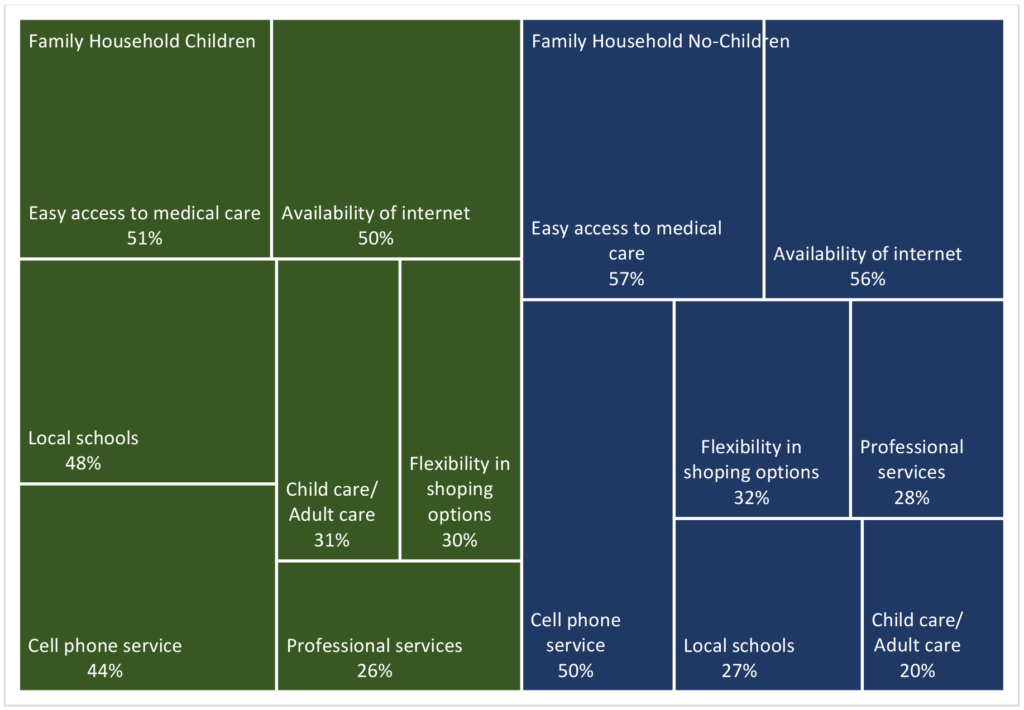By Alejandra Armesto Gómez
The significance of certain amenities within the local community cannot be overstated. Beyond the provision of services, these amenities contribute to the overall quality of life, satisfaction, and well-being of the individuals. The North Central Regional Center for Rural Development (NCRCRD) asked residents to rank the easy access to medical care, local schools, child/adult care, professional services, cell phone service, availability of internet, and flexibility in shopping options in according to their preference in their NCR: Stat Baseline Survey. [1]
The results obtained show that there are not many differences between the household configurations. Figure 1 reports the preferences of having the amenities mentioned before by households that have one or more children in their family and those who do not have them. As it can be noted, both groups ranked the easy access to medical care, and the availability to internet as the most important services to have in their local community. However, the rank slightly changes as the preferences continue to be listed.
Figure 1. Rank of preferences by Family Household with/without Children

In Figure 1, it is evident that local schools hold the third position in importance for family households with children, signifying that these households consider this service vital. When analyzing the data based on the head of the households being a couple, male, or female, local schools is important for 85%, 76%, and 79% of each group, respectively.
Similarly, for family households without children, the perception of the importance of local schools remains consistent across head of household type. When the head of the household is a couple, it is important for 51.8%, for a male head, it is 53.1%, and for a female head, it is 55.2%. This indicates that irrespective of household composition, the significance of local schools remains notably high for these groups.
In the context of the cellphone service category, occupying the third position for family households without children, a clear pattern of importance emerges among different household compositions. For households with a couple as the head, the share of the group for whom this is important is 85.2%, followed by households with female heads at 80.6% and male heads at 79.8%.
In contrast, for family households with children, the share of importance fluctuates slightly depending on the head of the household. Among households where a couple serves as the head, 84.5% of the group considers this aspect to be important. For households led by females, the percentage is slightly lower at 82.1%, while for households with male heads, it is 79.7%.
To conclude, this study demonstrates that despite variations in preferences among different groups, a consistent trend emerges – households predominantly consider these services important for their local community.
Reference
[1] Bednarikova, Z.; Marshall, M. I.; Wiatt, R. D.; Wilcox, Jr, M. D. (2022). North Central Region Household Data (NCR-Stat): Baseline Survey. Purdue University Research Repository. doi:10.4231/2DEM-Z333
Author
Alejandra Armesto Gómez, Graduate Research Assistant, North Central Regional Center for Rural Development
Download article
Suggested citation
Armesto Gómez, A. (2023, September 18). Unraveling Local Living: A Peek into the Diverse Preferences of Family Households with and without Children. North Central Regional Center for Rural Development. https://ncrcrd.ag.purdue.edu/2023/09/18/unraveling-local-living/
